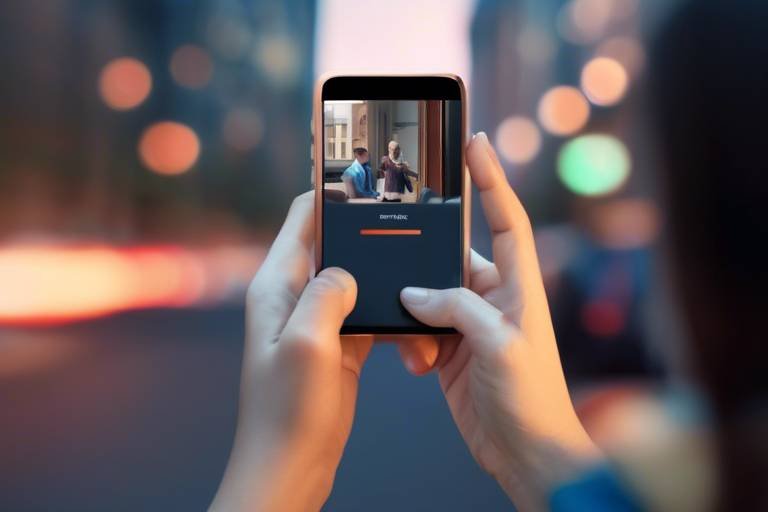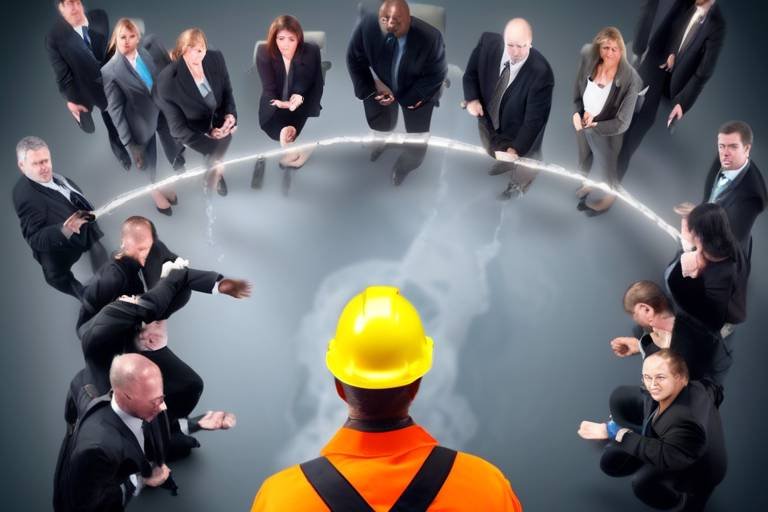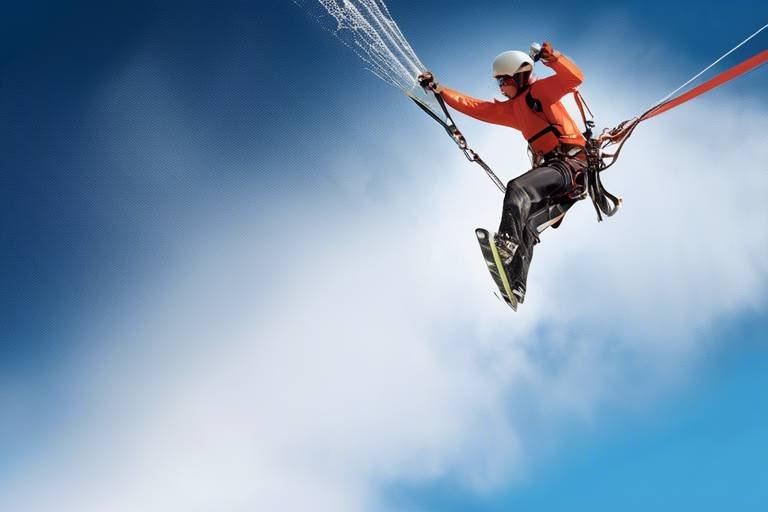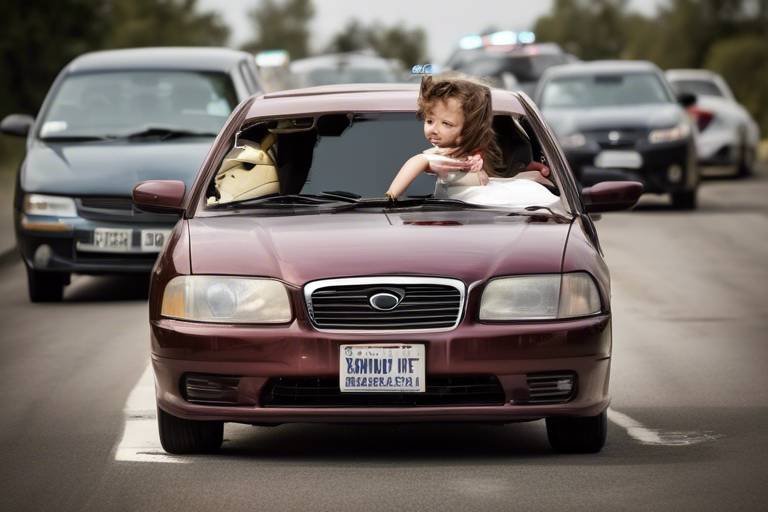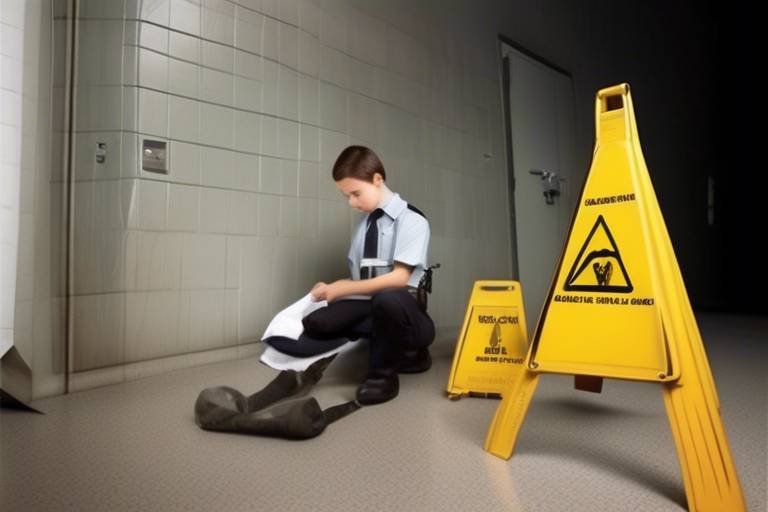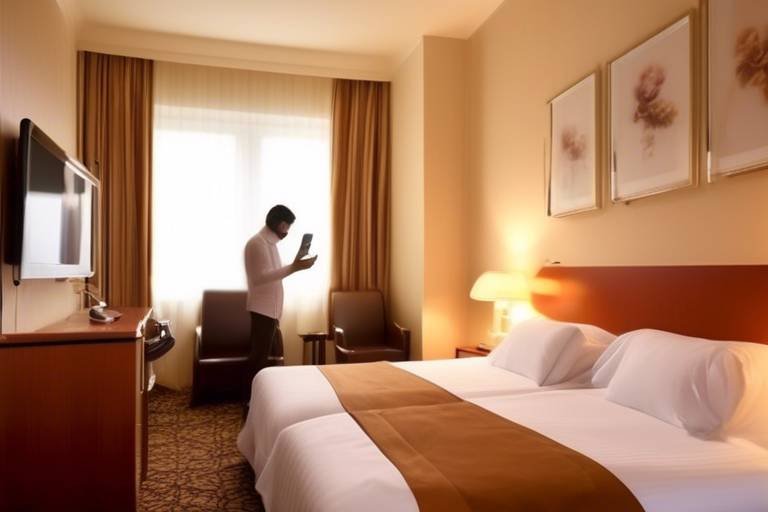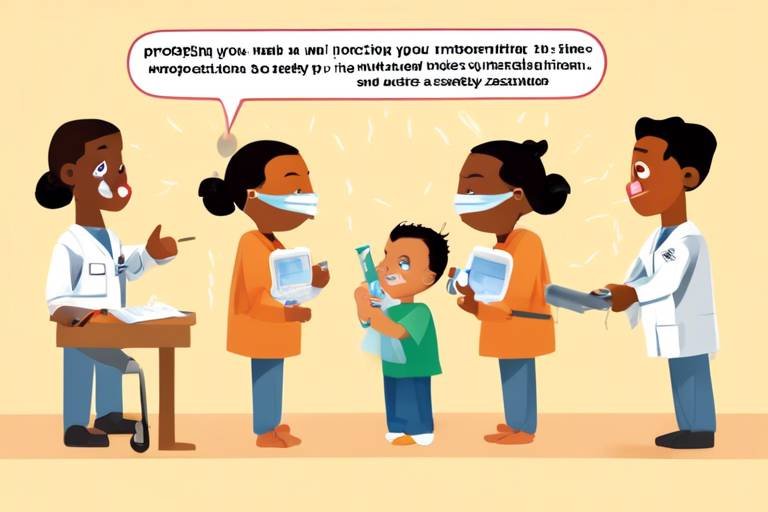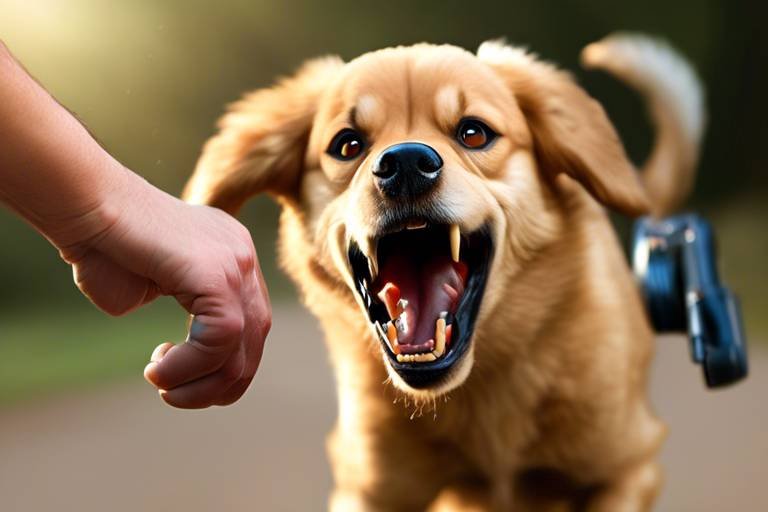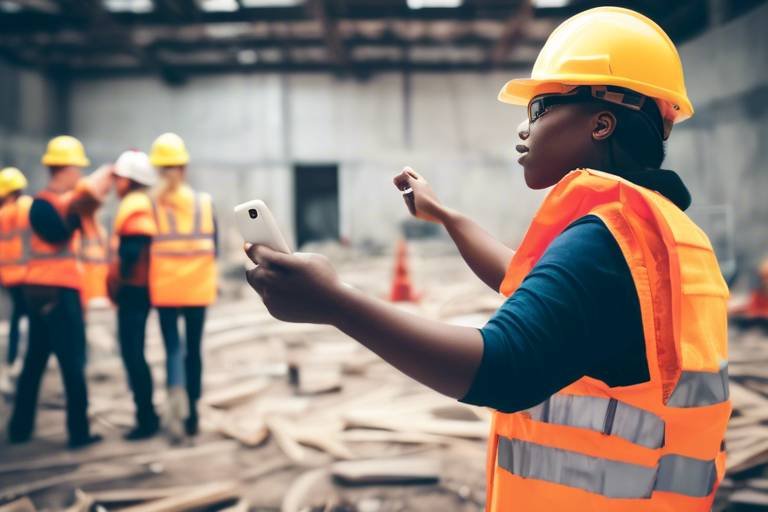Ten Effective Strategies to Boost Personal Safety
This article explores practical strategies to enhance personal safety in various environments, empowering individuals to take proactive measures to protect themselves and their loved ones from potential threats.
Personal safety encompasses measures and awareness that protect individuals from harm. Understanding its importance is the first step towards implementing effective strategies in daily life. Imagine walking through a dimly lit street alone at night; the sensation of vulnerability can be overwhelming. By grasping the concept of personal safety, you can transform that vulnerability into confidence. It’s not just about avoiding danger; it’s about cultivating a mindset that keeps you alert and prepared. This awareness can be the difference between a peaceful evening and a potential threat.
Being aware of your surroundings can significantly enhance your safety. Situational awareness is like having a sixth sense; it allows you to perceive your environment and anticipate potential dangers. Whether you’re in a crowded subway or a quiet park, staying alert to your surroundings can make all the difference. To develop this skill, start by regularly scanning your environment and noting anything unusual. Are there people lingering too long in one spot? Is someone acting strangely? By honing your observation skills, you can spot potential threats before they escalate.
Identifying potential dangers is crucial for personal safety. It's like being a detective in your own life, constantly looking for clues that something might be amiss. Common threats can come in various forms, from suspicious individuals to dangerous situations. Understanding what to look for can help you stay one step ahead. For instance, if someone is following you, pay attention to their behavior. Do they seem overly interested in your movements? Are they trying to blend in or stand out? By recognizing these signs early, you can take appropriate action to protect yourself.
Different environments present unique risks. Assessing environmental factors is essential for your safety. Consider aspects such as lighting, crowd density, and escape routes. For example, a well-lit area with plenty of people around can provide a sense of security, while a dark alley might be a red flag. Always have an exit plan in mind; knowing where to go can be your lifeline in a crisis. It's like playing chess; you need to think several moves ahead to stay safe.
Understanding behavioral cues can help you recognize when something feels off. This section discusses the importance of reading body language and other indicators of potential threats. For instance, if someone is invading your personal space or exhibiting aggressive gestures, it’s a sign to be cautious. Trust your instincts; if something feels wrong, it probably is. Just like a dog senses danger before it strikes, you too can cultivate a keen awareness of your surroundings.
Being prepared for emergencies can save lives. Emergency preparedness is akin to having an insurance policy for your safety. It’s not just about having a first aid kit; it involves creating a comprehensive safety plan. Start by identifying potential emergencies you might face, whether they are natural disasters or personal attacks. Next, gather necessary supplies, such as a flashlight, water, and a whistle. Make sure your loved ones know the plan and practice it regularly. Having a strategy in place can provide peace of mind and ensure everyone knows what to do in a crisis.
Learning self-defense can boost confidence and provide the skills needed to protect oneself. It’s not just about physical strength; it’s about mental toughness and preparedness. This section introduces basic self-defense techniques that anyone can learn for personal safety. Think of self-defense as a toolbox; the more tools you have, the better equipped you are to handle various situations. Whether it's a simple escape maneuver or a verbal assertiveness technique, having these skills can empower you to face threats head-on.
This part focuses on practical physical self-defense skills that can be applied in real-life situations, empowering individuals to respond effectively to threats. Techniques such as blocking, striking, and escaping can be learned through various self-defense classes. These skills not only enhance your physical safety but also build confidence. Imagine walking down the street knowing you can defend yourself if necessary; that confidence radiates and can deter potential threats.
Verbal self-defense is just as important as physical techniques. Here, we discuss how to use communication to de-escalate potential confrontations and assert personal boundaries. Sometimes, the best defense is a strong voice. Practicing assertive communication can help you stand your ground without resorting to physical confrontation. For instance, using clear and confident language can disarm an aggressive individual. Remember, words can be your strongest weapon.
Technology offers various tools to enhance personal safety. In today’s digital age, there are countless apps and devices designed to keep you safe. From personal safety apps that allow you to send your location to trusted contacts to wearable devices that can alert authorities in emergencies, technology can be a game-changer. Embrace these tools as part of your safety strategy. It's like having a guardian angel in your pocket, ready to assist at a moment's notice.
- What is personal safety? Personal safety refers to the measures and awareness that protect individuals from harm.
- How can I improve my situational awareness? Regularly scan your environment, trust your instincts, and practice observing people and surroundings.
- Are self-defense classes effective? Yes, self-defense classes teach practical skills that can empower individuals to protect themselves.
- What technology can help enhance personal safety? Personal safety apps, wearable devices, and emergency alert systems are effective tools.
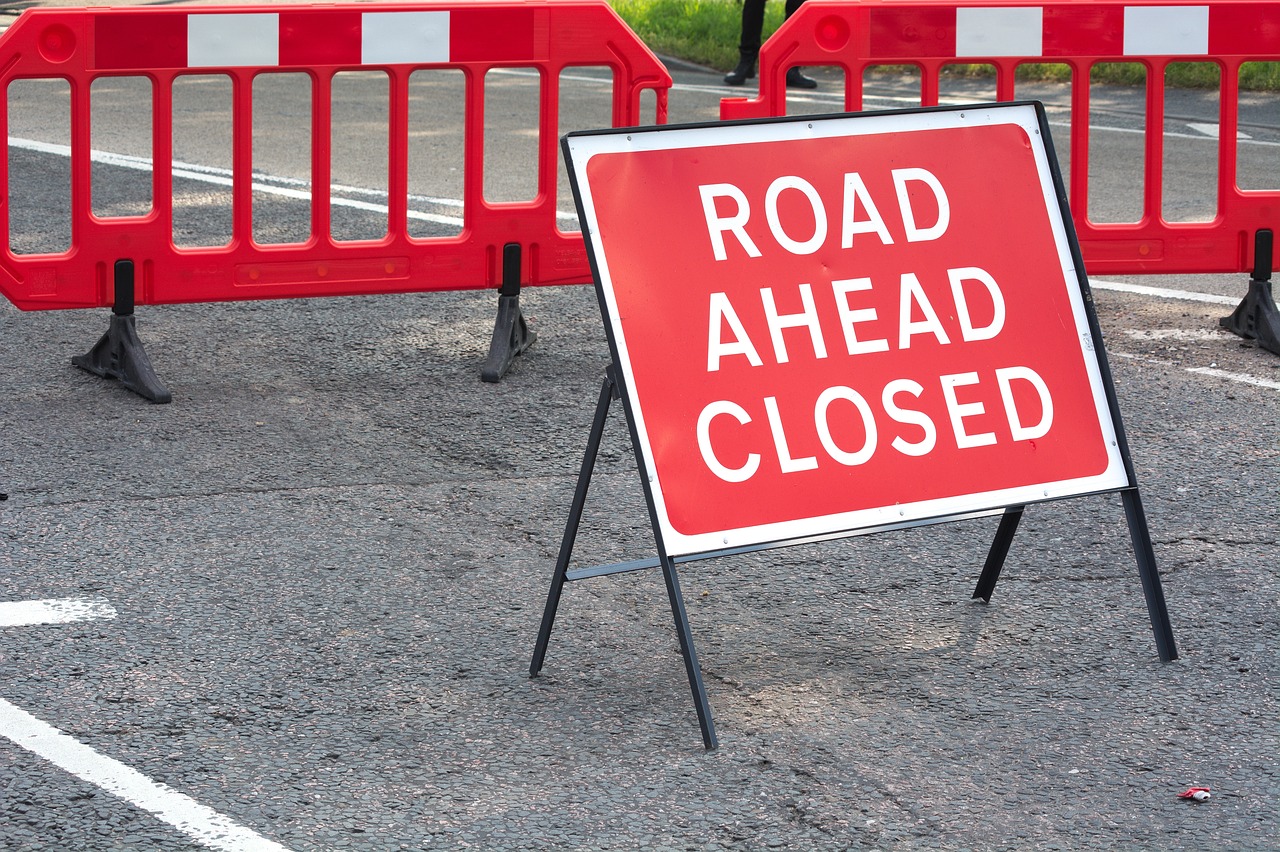
Understanding Personal Safety
Personal safety is not just a buzzword; it's a vital aspect of our daily lives that often gets overlooked. At its core, personal safety encompasses the measures and awareness that protect individuals from harm. Think about it: just like you wouldn’t venture into a dark alley without a flashlight, you shouldn’t navigate your day-to-day life without a keen sense of safety awareness. Understanding the importance of personal safety is the first step towards implementing effective strategies that can shield you from potential threats.
Imagine walking through a bustling city or even a quiet neighborhood. How often do you pay attention to the people around you or the environment you’re in? Developing a strong sense of personal safety means being conscious of your surroundings and recognizing that threats can come in various forms. Whether it's a suspicious individual lurking nearby or an unsafe environment, being aware can make all the difference. In fact, studies show that individuals who practice situational awareness are less likely to become victims of crime. So, what does this mean for you? It means that by simply being more observant, you can significantly enhance your safety.
Moreover, personal safety isn’t just about avoiding danger; it’s also about empowering yourself with knowledge and skills. This includes understanding how to react in emergencies, recognizing the signs of potential threats, and knowing how to defend yourself if necessary. It’s like having a safety net; you might not need it all the time, but it’s reassuring to know it’s there when you do. By integrating personal safety practices into your daily routine, you not only protect yourself but also set an example for those around you, creating a ripple effect of awareness and caution.
In the following sections, we will dive deeper into specific strategies that can enhance your personal safety. From developing situational awareness to understanding self-defense techniques, each strategy is designed to empower you and ensure that you feel confident navigating any environment. Remember, personal safety is not a one-time effort; it's a continuous journey that requires vigilance, education, and a proactive mindset.

Situational Awareness
Situational awareness is not just a buzzword; it’s a vital skill that can significantly enhance your personal safety in any environment. Imagine walking down a bustling city street or hiking through a serene forest. The ability to be aware of your surroundings can mean the difference between a peaceful experience and a dangerous encounter. It's all about staying alert and tuned into what’s happening around you. But how do you develop this skill? Let's dive into some practical ways to sharpen your situational awareness.
First off, situational awareness involves observation. This means actively looking for details that others might overlook. For instance, when you're in a crowded area, take a moment to scan the environment. Are there any individuals acting suspiciously? Is someone too close for comfort? By being observant, you can identify potential threats before they escalate. Think of it as being a detective in your own life—always on the lookout for clues that could indicate danger.
Next, it's essential to consider the context of your surroundings. Different environments have different risks. For example, urban areas may present unique challenges like pickpockets or aggressive panhandlers, while rural settings might expose you to wildlife or isolated locations. Understanding these environmental factors can help you adapt your awareness strategies accordingly. Here’s a quick breakdown:
| Environment | Potential Risks |
|---|---|
| Urban | Pickpockets, scams, aggressive individuals |
| Rural | Wildlife encounters, isolation, difficult terrain |
| Public Transport | Harassment, theft, crowded spaces |
Now, let's talk about behavioral cues. Being able to read body language and other non-verbal signals can provide critical insights into a person's intentions. For instance, if someone is avoiding eye contact, fidgeting, or standing too close, these could be signs of discomfort or aggression. By learning to interpret these cues, you can better gauge whether a situation feels safe or if it’s time to remove yourself from it. Remember, your gut feelings are often your best ally, so trust your instincts!
Lastly, maintaining a mindset of preparedness is crucial. Situational awareness is not just about observing; it’s also about being ready to act. This means having a plan in place for various scenarios. What would you do if you felt threatened? Where would you go? Having a mental map of escape routes or safe havens can be incredibly empowering. It’s like being a chess player, always thinking a few moves ahead.
In conclusion, enhancing your situational awareness is an ongoing process that requires practice and dedication. By observing your surroundings, understanding environmental risks, reading behavioral cues, and maintaining a preparedness mindset, you can significantly improve your personal safety. So, the next time you step out, remember to stay alert and be proactive. Your safety is worth it!
- What is situational awareness? Situational awareness is the ability to perceive and understand your environment, which helps you identify potential threats.
- How can I improve my situational awareness? You can improve it by practicing observation, understanding your environment, and being mindful of behavioral cues.
- Why is situational awareness important? It helps you anticipate and avoid dangerous situations, enhancing your overall personal safety.
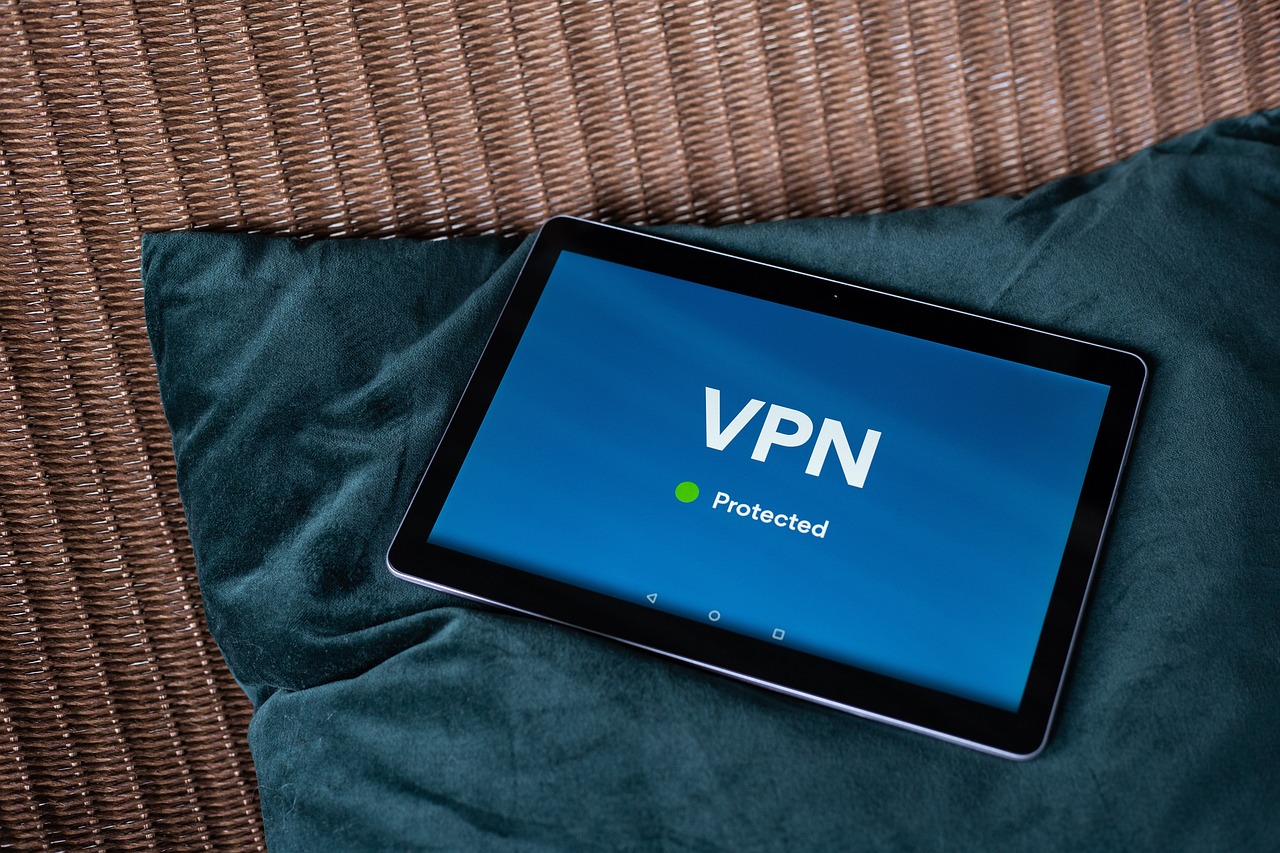
Recognizing Potential Threats
Recognizing potential threats is not just about being paranoid; it's about being prepared and aware of your surroundings. Every day, we encounter various situations where we need to assess the safety of our environment. Whether you're walking alone at night or navigating a crowded area, being able to identify potential dangers can be the difference between a safe experience and a dangerous one. So, how do you sharpen this skill? It starts with observation and intuition.
First, let's talk about the common types of threats you might encounter. These can range from physical confrontations to environmental hazards. Here are some examples:
- Strangers behaving suspiciously: If someone is acting oddly, such as loitering in an area without a clear purpose, it's worth paying attention.
- Unfamiliar environments: New places can present unique dangers, especially if you're not familiar with the area.
- Changes in your surroundings: If something feels off, like a sudden increase in noise or a crowd gathering, trust your instincts.
Next, understanding environmental factors is crucial. Think about the places you frequent. Are they well-lit? Is there a clear path for escape? For instance, when walking through a park at dusk, consider how the lighting affects your visibility. Poorly lit areas can conceal potential threats, making it harder for you to see danger coming. Always look for escape routes and stay aware of who is around you.
Another important aspect is recognizing behavioral cues. People communicate not just through words but also through body language. If you notice someone approaching you with a tense posture or erratic movements, it might indicate that they are not in a good state of mind. Being able to read these signs can help you assess whether to engage or distance yourself from a situation.
In conclusion, recognizing potential threats involves a combination of keen observation, understanding environmental factors, and interpreting behavioral cues. It's about developing a sixth sense for safety. By training yourself to notice these details, you empower yourself to react appropriately and, in many cases, avoid dangerous situations altogether.
Q: How can I improve my situational awareness?
A: Practice being mindful of your surroundings. Take note of the people, places, and activities around you. Consider taking a self-defense class that emphasizes awareness.
Q: What should I do if I feel threatened?
A: Trust your instincts. If you feel uncomfortable, remove yourself from the situation if possible. Don’t hesitate to contact authorities if you believe you're in danger.
Q: Are there specific apps that can help with personal safety?
A: Yes, there are many safety apps available that offer features like location tracking, emergency alerts, and direct communication with emergency services. Research and choose one that fits your needs.
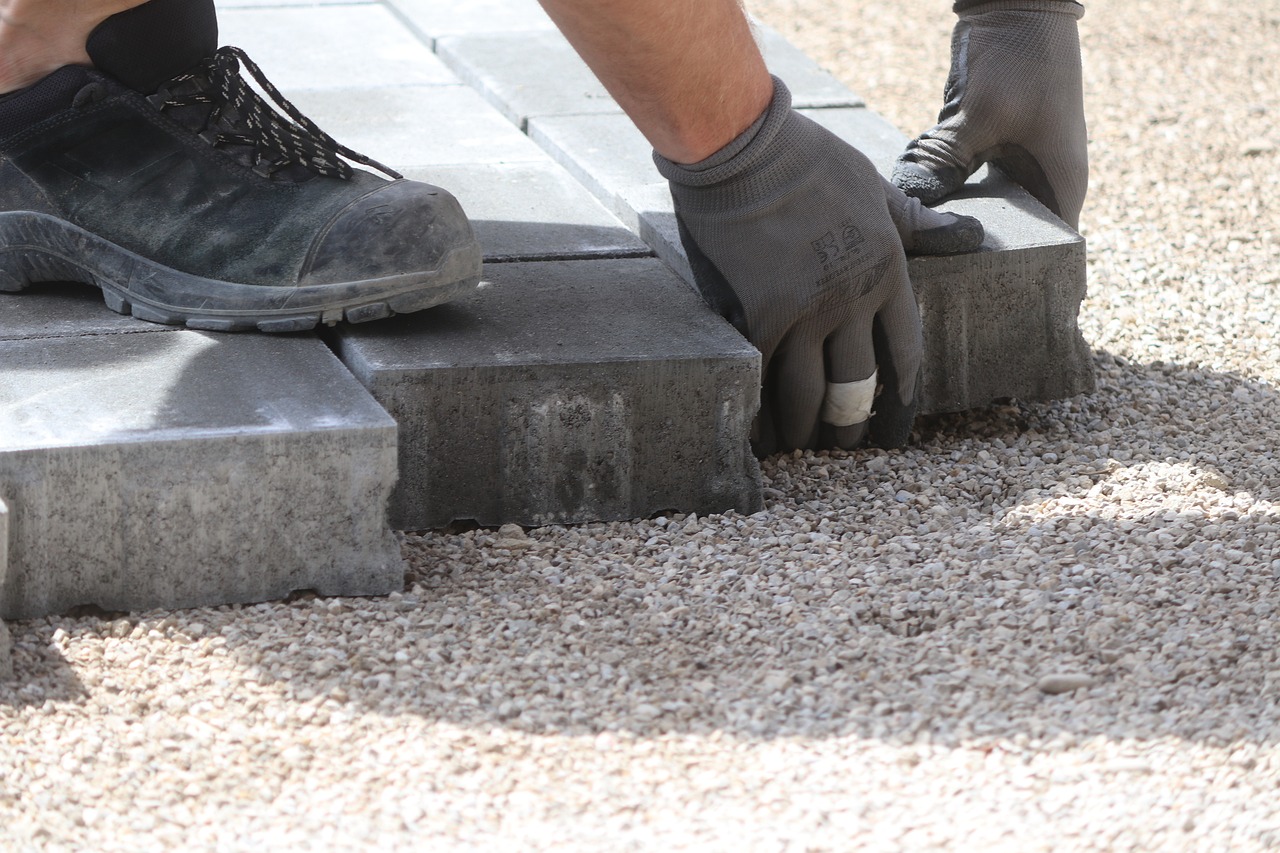
Environmental Factors
When it comes to personal safety, the environments we navigate daily play a pivotal role in determining our vulnerability to potential threats. Think of your surroundings as a silent partner in your safety journey; they can either bolster your security or expose you to risks. For instance, well-lit areas tend to feel safer compared to dimly lit ones, which can obscure hazards and make it easier for ill-intentioned individuals to lurk unnoticed. Therefore, understanding and assessing the environmental factors around you is crucial for enhancing your personal safety.
One of the first things to consider is the lighting in your environment. Brightly lit streets, parking lots, and public spaces not only deter criminal activity but also make it easier for you to spot potential dangers. Conversely, poorly lit areas can create a sense of unease and increase the likelihood of encountering threats. It's essential to familiarize yourself with the locations you frequent, identifying which areas are well-lit and which are not. If you find yourself in a dimly lit environment, always remain vigilant and be prepared to take alternative routes.
Crowd density is another critical factor to consider. While bustling areas can provide a sense of safety in numbers, they can also create confusion and make it easier for someone to blend in unnoticed. For example, in crowded public transport, pickpockets may thrive in the chaos. It’s important to stay alert and be aware of your belongings. If you notice someone behaving suspiciously in a crowd, trust your instincts and remove yourself from the situation if possible. Always keep your personal space in mind; if someone is invading it, don’t hesitate to assert yourself.
Moreover, knowing your escape routes is vital. In any environment, whether you're at a concert, a mall, or even at home, being aware of how to exit quickly in case of an emergency can make a significant difference. Take a moment to survey your surroundings and identify exits. In the case of an emergency, knowing where to go can save precious seconds that could be crucial for your safety. Remember, preparation is key!
Lastly, environmental factors also include the presence of security features such as cameras, security personnel, and emergency call boxes. These elements can serve as deterrents to potential threats and provide peace of mind. If you find yourself in an unfamiliar area, look for these safety features and stay close to them whenever possible. In summary, by being aware of your environment and understanding its unique risks, you can significantly enhance your personal safety.
- What are the most important environmental factors to consider for personal safety?
Key factors include lighting, crowd density, escape routes, and security features in your surroundings.
- How can I improve my situational awareness?
Practice being mindful of your surroundings, regularly assess potential threats, and stay alert to changes in your environment.
- What should I do if I feel unsafe in my environment?
Trust your instincts; if something feels off, remove yourself from the situation and seek help if necessary.
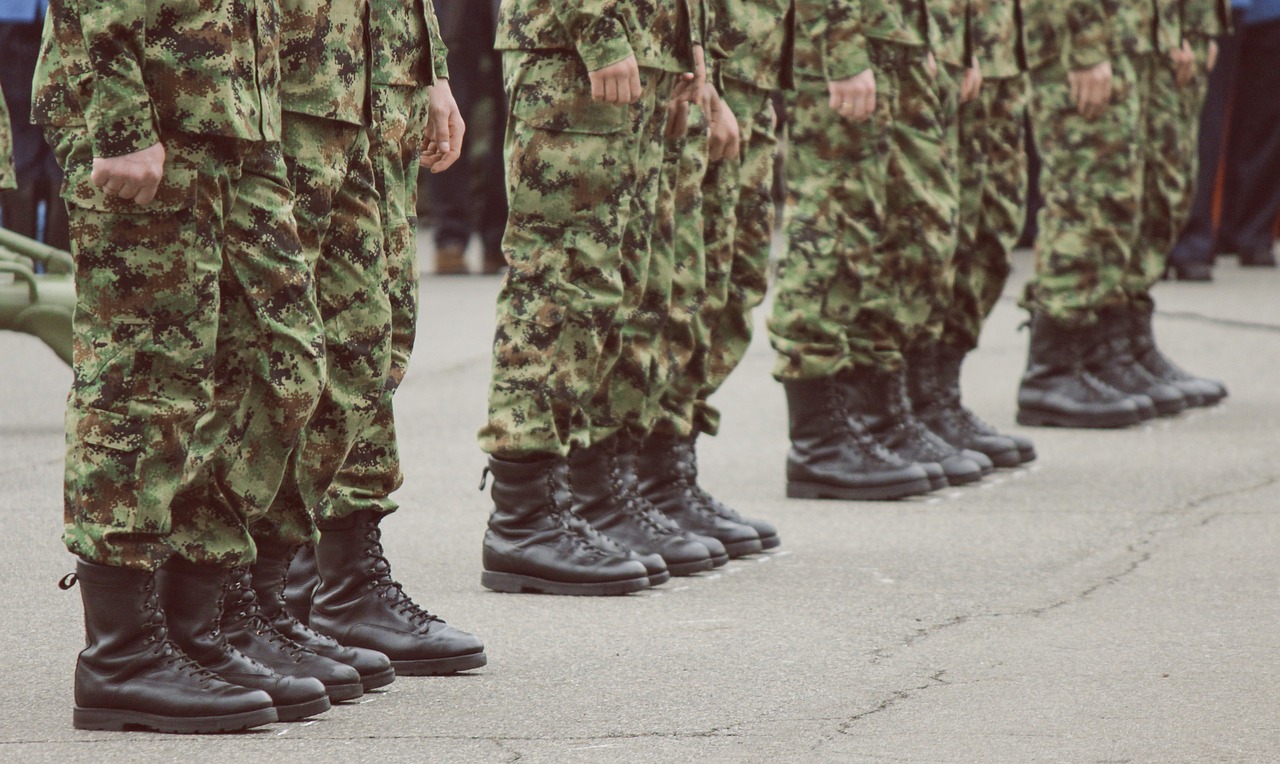
Behavioral Cues
Understanding is essential for enhancing your personal safety. It’s like having a sixth sense that alerts you when something feels off. Have you ever walked into a room and felt an uncomfortable tension? That’s the kind of instinct you want to hone. Behavioral cues can come from the way people act, their body language, and even their tone of voice. By learning to recognize these signals, you can better assess situations and decide whether to stay or leave.
One of the most important aspects of recognizing behavioral cues is understanding body language. For instance, crossed arms can indicate defensiveness or discomfort, while someone who avoids eye contact might be hiding something or feeling insecure. Pay attention to the following signs:
- Facial Expressions: A frown or a scowl can signify hostility, while a forced smile may indicate deceit.
- Posture: An aggressive stance, such as leaning forward with clenched fists, often signals a potential threat.
- Proximity: If someone is invading your personal space without your consent, it could be a warning sign.
Moreover, vocal tone and speech patterns can also provide valuable information. A shaky voice might indicate nervousness, while a loud and aggressive tone could suggest anger. Being attuned to these vocal cues can help you gauge someone’s emotional state and intentions. For example, if someone is speaking too quickly and their words are slurred, they might be under the influence of substances or feeling anxious.
Another crucial element is observing group dynamics. Sometimes, it’s not just one person’s behavior that matters, but how a group interacts. If you notice a group of individuals acting in a way that seems coordinated or secretive, it could be a red flag. Trust your instincts; if something doesn’t feel right, it probably isn’t.
In summary, developing an awareness of behavioral cues is an ongoing process. It requires practice and a willingness to observe the world around you. Just like a detective piecing together clues, you can learn to read the subtle signs that may indicate danger. Remember, the goal is not to live in fear but to empower yourself with knowledge and awareness. By sharpening your ability to recognize these cues, you can take proactive steps to protect yourself and those you care about.
- What are behavioral cues? Behavioral cues are non-verbal signals that indicate a person's emotional state or intentions, such as body language, facial expressions, and vocal tones.
- How can I improve my ability to read behavioral cues? Practice observing people in various situations, paying attention to their body language and expressions. Engage in conversations to see how tone and speech patterns change with context.
- Are there specific cues that indicate danger? Yes, signs such as aggressive posture, avoidance of eye contact, and a loud or aggressive tone can indicate potential threats.
- Can behavioral cues vary by culture? Absolutely! Different cultures have unique ways of expressing emotions and intentions, so it's important to consider cultural context when interpreting cues.
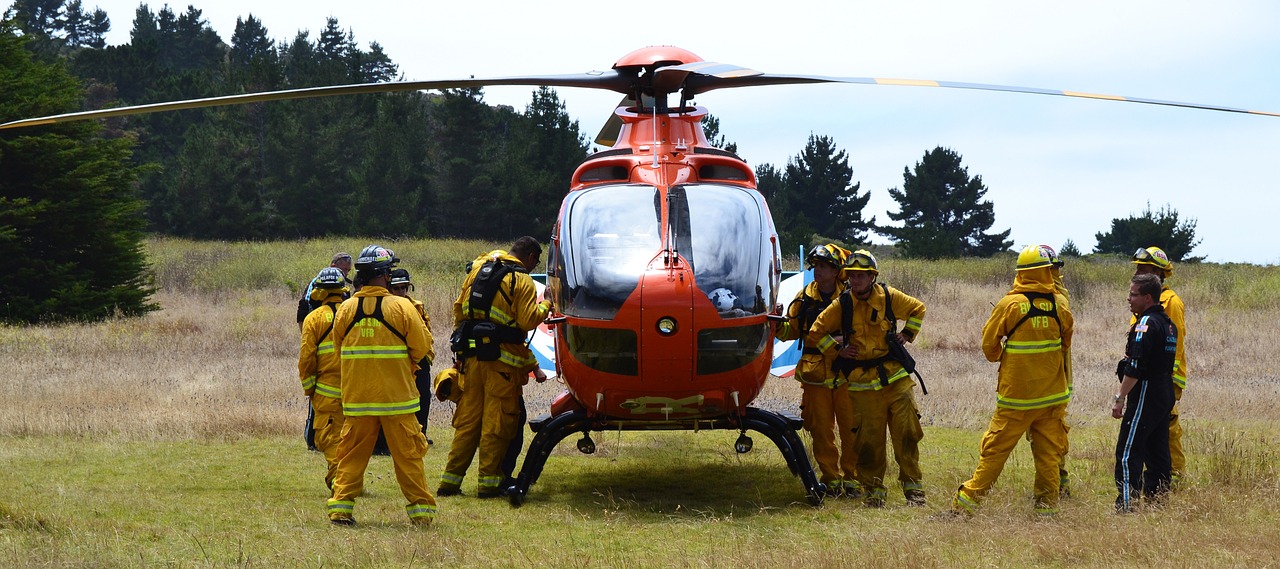
Emergency Preparedness
Being prepared for emergencies is not just a smart move; it’s a necessity in today’s unpredictable world. Imagine waking up one day to find that a natural disaster has struck your area. What would you do? Would you be ready to protect yourself and your loved ones? Emergency preparedness means taking proactive steps to ensure that you have the necessary plans and supplies in place to handle various crises, whether they are natural disasters like hurricanes or man-made incidents such as fires or active shooter situations.
One of the first steps in emergency preparedness is to create a comprehensive safety plan. This plan should outline what actions to take in different scenarios, ensuring that everyone in your household knows their roles. For instance, if a fire breaks out, do you know the fastest escape route? Have you designated a meeting point outside your home where everyone can gather safely? These elements are crucial in maintaining calm and ensuring safety during chaotic situations.
In addition to a safety plan, having the right supplies on hand can make a significant difference. A well-stocked emergency kit is your lifeline in times of crisis. Here’s a quick look at some essential items that should be included in your kit:
- Water: At least one gallon per person per day for at least three days.
- Food: Non-perishable food items that can last for several days.
- First Aid Kit: A basic kit that includes bandages, antiseptics, and any personal medications.
- Flashlight and Batteries: Power outages can occur during emergencies.
- Multi-tool: A versatile tool can be invaluable in various situations.
It’s also essential to stay informed. This means keeping an eye on local news and weather reports, especially during storm seasons. Many communities have alert systems that send notifications about emergencies. Signing up for these services can keep you ahead of the curve, allowing you to act swiftly when necessary.
Moreover, practicing your emergency plan can be just as important as creating it. Regular drills help reinforce the steps everyone should take, making it second nature when an actual emergency occurs. Think of it like a fire drill at school; the more you practice, the more prepared you become.
Lastly, consider the emotional aspect of emergencies. It’s not just about physical safety; mental preparedness is equally important. In stressful situations, people can panic, which can lead to poor decision-making. Having a plan and practicing it can help alleviate anxiety, allowing individuals to think clearly and act decisively when it matters most.
In summary, emergency preparedness is about being proactive rather than reactive. By creating a safety plan, stocking up on essential supplies, staying informed, practicing regularly, and addressing emotional readiness, you can significantly enhance your safety and that of your loved ones. Remember, when it comes to emergencies, it’s better to be over-prepared than under-prepared!
Q1: What should I include in my emergency kit?
A1: Your emergency kit should include water, non-perishable food, a first aid kit, flashlight and batteries, a multi-tool, and any personal medications.
Q2: How often should I practice my emergency plan?
A2: It’s recommended to practice your emergency plan at least twice a year to ensure everyone knows what to do in case of an emergency.
Q3: Where can I find local emergency alerts?
A3: You can find local emergency alerts through your city or county’s official website, local news stations, or by signing up for community alert systems.

Self-Defense Techniques
When it comes to personal safety, are not just about throwing punches or mastering complex moves; they’re about empowering yourself with the knowledge and skills to protect yourself in potentially dangerous situations. Imagine walking down a dimly lit street and suddenly feeling uneasy. Wouldn’t it be reassuring to know that you have the skills to handle whatever comes your way? This section will introduce you to some basic yet effective self-defense techniques that anyone can learn, regardless of fitness level or experience.
First and foremost, it’s essential to understand that self-defense is not solely about physical confrontation. In many cases, avoiding a conflict is the best strategy. Knowing how to read a situation and assess whether it’s safe to engage or to walk away can be the difference between a minor scare and a serious incident. This is where situational awareness plays a crucial role, allowing you to make informed decisions about your safety.
Now, let’s dive into some practical self-defense techniques. One of the most effective skills you can learn is how to deliver a strong strike. Whether it’s a palm strike to the nose or a knee to the groin, these moves can incapacitate an attacker long enough for you to escape. Remember, the goal is not to fight but to create an opportunity to get away. Practice these moves regularly to build muscle memory, so they become second nature when you need them the most.
In addition to physical techniques, verbal self-defense is equally important. Imagine you’re in a situation where someone is being aggressive. Instead of panicking, you can use your voice to assert boundaries. Phrases like “Back off!” or “Leave me alone!” can be powerful tools to de-escalate a situation. The key here is to project confidence in your voice and body language. Stand tall, maintain eye contact, and speak clearly. This can often deter potential threats before they escalate.
Moreover, self-defense is not a one-size-fits-all approach. Different situations may require different responses. For example, if you find yourself in a crowded space, using the crowd to your advantage can be a smart move. By staying aware of your surroundings and identifying potential escape routes, you can navigate your way to safety without drawing attention to yourself.
To summarize, here are a few key self-defense techniques that can enhance your personal safety:
- Striking Techniques: Palm strikes, knee strikes, and elbow strikes can be effective in self-defense.
- Verbal Defense: Assertive communication can help de-escalate confrontational situations.
- Situational Awareness: Always be aware of your surroundings and potential escape routes.
Remember, self-defense is about making smart choices and being prepared. Taking a self-defense class can also provide you with hands-on experience and confidence. Many local community centers and martial arts studios offer classes tailored for beginners, focusing on practical skills rather than competitive fighting. So, why not take that first step towards empowerment? You never know when these skills might come in handy.
Q: Do I need to be physically fit to learn self-defense?
A: Absolutely not! Self-defense techniques can be adapted to any fitness level. The key is to focus on technique and awareness rather than brute strength.
Q: What should I do if I feel threatened?
A: Trust your instincts. If you feel uncomfortable, try to remove yourself from the situation, and don’t hesitate to call for help if necessary.
Q: How often should I practice self-defense techniques?
A: Regular practice is essential. Even a few minutes a week can help reinforce your skills and build confidence.
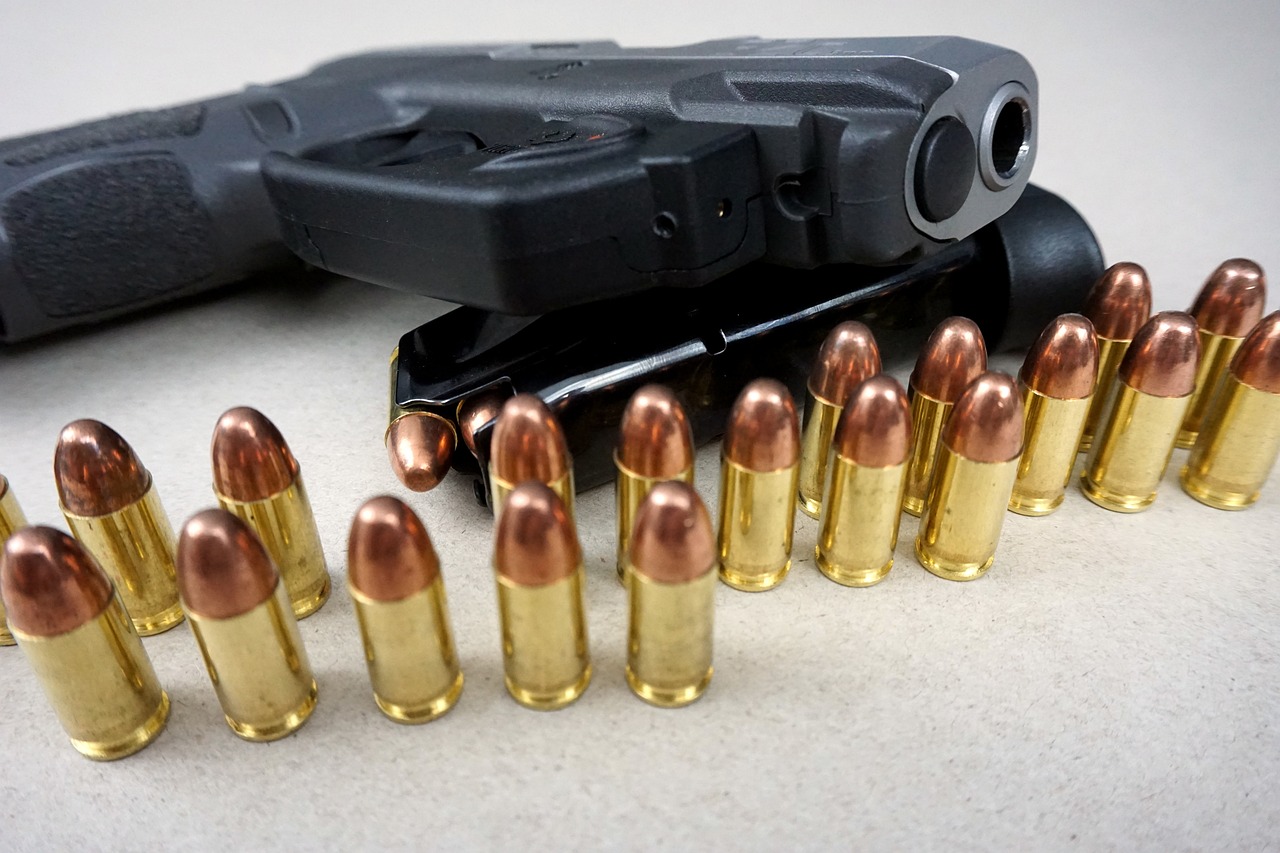
Physical Self-Defense Skills
When it comes to personal safety, having a solid grasp of can be a game changer. Imagine walking down the street, and suddenly, you feel that prickling sensation at the back of your neck—something just feels off. In such moments, knowing how to protect yourself can mean the difference between safety and danger. Physical self-defense is not just about brute strength; it's about using your body effectively to evade threats and create opportunities to escape.
One of the most important aspects of physical self-defense is understanding the concept of leverage. Instead of relying solely on strength, which can be a disadvantage against a larger opponent, leverage allows you to use your body mechanics to your advantage. For instance, techniques such as joint locks and throws can help you control or incapacitate an aggressor, regardless of their size. Learning how to apply joint manipulation can empower you to defend yourself effectively.
Moreover, it’s essential to focus on the vital areas of the body when practicing self-defense. Striking these areas can incapacitate an attacker quickly, allowing you to escape. Some of these vital areas include:
- The eyes
- The nose
- The throat
- The groin
- The knees
Incorporating strikes to these areas into your self-defense training can significantly enhance your effectiveness in a real-life confrontation. However, it's not just about striking; it’s also about knowing when and how to strike. Timing and precision are crucial. For instance, if someone grabs your wrist, a quick twist and a strike to the attacker’s nose can create the necessary distraction for you to escape.
Another vital skill to master is escaping holds. Many self-defense classes teach techniques for breaking free from various types of holds, such as bear hugs or wrist grabs. For example, if someone attempts to bear hug you from behind, a simple but effective technique is to drop your weight and turn your body towards the attacker, using your elbows to create space. This maneuver not only helps you escape but also puts you in a better position to defend yourself further.
Training in physical self-defense is not just about practicing moves; it’s about building muscle memory. Regular practice helps your body react instinctively in high-stress situations. Many martial arts classes, such as Krav Maga or Brazilian Jiu-Jitsu, emphasize realistic scenarios to prepare you for potential threats. These classes not only teach you techniques but also help you build confidence and awareness of your surroundings.
Finally, remember that self-defense is about more than just physical prowess; it’s also about mental readiness. Being aware of your environment and having a plan can make a significant difference. For instance, if you find yourself in a questionable situation, having the confidence to assert yourself verbally can often deter potential threats before they escalate into physical confrontations.
In summary, physical self-defense skills are essential for anyone looking to enhance their personal safety. By understanding leverage, focusing on vital areas, mastering escape techniques, and building muscle memory through practice, you can empower yourself to respond effectively in dangerous situations. Remember, the goal of self-defense is not to engage in a fight but to create an opportunity to escape safely.
Q: Do I need to be physically strong to learn self-defense?
A: Not at all! Self-defense techniques often rely on leverage and technique rather than brute strength, making them accessible to everyone.
Q: How long does it take to become proficient in self-defense?
A: Proficiency varies by individual, but regular practice can lead to noticeable improvements in just a few months.
Q: Is self-defense training suitable for all ages?
A: Yes! Many self-defense classes cater to different age groups and skill levels, ensuring that everyone can learn effective techniques.
Q: Can self-defense techniques be applied in real-life situations?
A: Yes, self-defense training often incorporates realistic scenarios to prepare students for potential threats they may encounter in daily life.
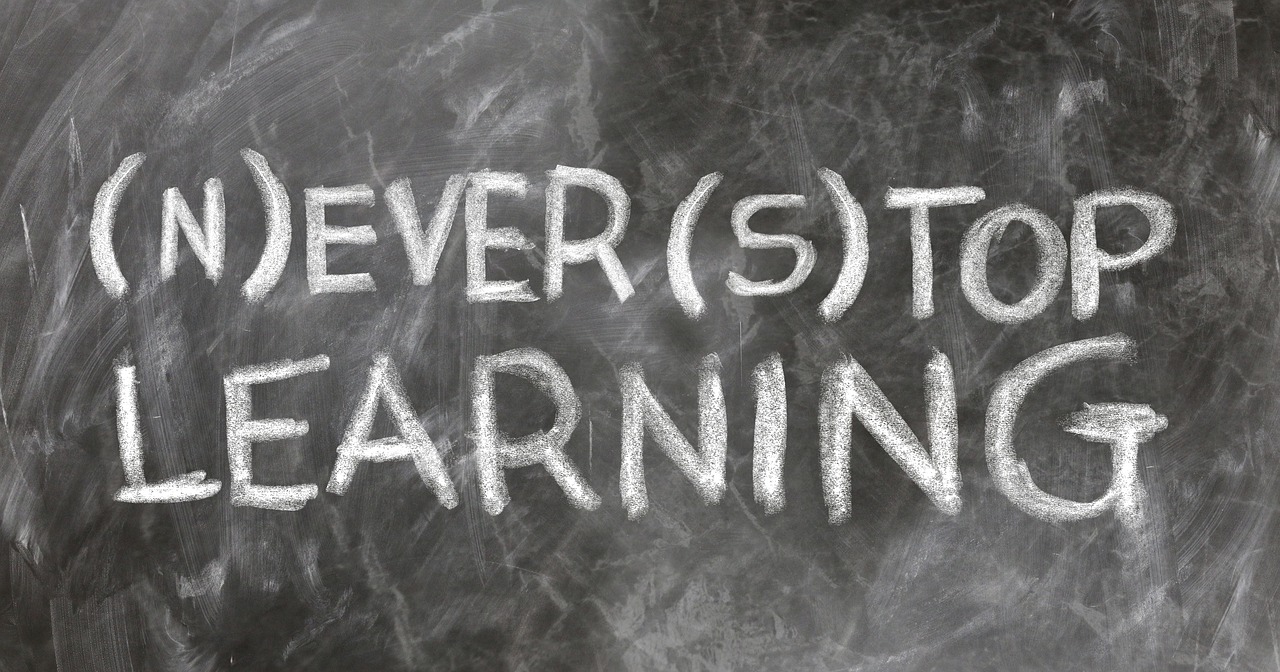
Verbal Self-Defense Strategies
When it comes to personal safety, many people often think of physical self-defense techniques, but verbal self-defense is equally important. It's about using your words and tone to de-escalate potentially dangerous situations and assert your boundaries. Imagine you're walking down the street and someone approaches you aggressively. Instead of panicking or resorting to physical confrontation, employing effective verbal strategies can help you navigate the situation safely.
One of the most powerful tools in verbal self-defense is the ability to stay calm and collected. When faced with a threatening situation, maintaining a steady voice and composed demeanor can make a significant difference. This not only shows confidence but can also help defuse tension. Think of it as being the eye of the storm; while chaos surrounds you, you remain unshaken.
Another key aspect is using assertive communication. This means expressing your needs and boundaries clearly and firmly without being aggressive. For instance, if someone is invading your personal space, you can say, “Please step back; I need some space.” This simple statement conveys your discomfort and establishes your boundaries without escalating the situation into a confrontation.
Additionally, it’s crucial to recognize verbal cues that indicate a potential threat. Pay attention to the other person's tone, choice of words, and body language. If someone is using threatening language or appears overly aggressive, it's a sign to be cautious. Responding with a calm and neutral tone can help to de-escalate the situation. For example, if someone yells at you, responding with a calm, “I don’t appreciate being spoken to that way,” can often take them off guard and reduce aggression.
Moreover, using open-ended questions can redirect the conversation and defuse hostility. Questions like, “What’s bothering you?” or “Can we talk about this calmly?” can shift the focus from confrontation to dialogue. This technique not only shows that you’re willing to listen but also puts the onus on the aggressor to explain themselves, which can often lead to a cooling of tempers.
Lastly, practice makes perfect. Role-playing scenarios with friends or family can help you become more comfortable with these strategies. The more you practice, the more natural it will feel to use your voice as a tool for self-defense. Just like a muscle, your ability to communicate effectively in stressful situations strengthens over time.
In summary, while physical self-defense skills are essential, never underestimate the power of words. By mastering verbal self-defense strategies, you not only empower yourself to handle potentially dangerous situations but also foster a sense of confidence that can deter aggressors in the first place. Remember, your voice is a powerful weapon—use it wisely!
- What is verbal self-defense? Verbal self-defense involves using communication techniques to de-escalate potentially dangerous situations and assert personal boundaries.
- Can verbal self-defense be effective in all situations? While it may not be suitable for every scenario, many situations can be defused with effective communication.
- How can I practice verbal self-defense? Role-playing with friends or family can help you become more comfortable with using verbal techniques in stressful situations.
- Is it better to use verbal or physical self-defense? It depends on the situation. Verbal self-defense is often the first line of defense, but physical techniques may be necessary in extreme cases.

Utilizing Technology for Safety
In today's fast-paced world, technology plays a pivotal role in enhancing our personal safety. With just a few taps on your smartphone or clicks on your computer, you can access a plethora of tools designed to keep you safe in various situations. From emergency alerts to location tracking, these technological advancements are like having a personal safety net at your fingertips. But how do you choose the right tools and ensure they serve their purpose effectively?
First off, let's talk about **safety apps**. There are numerous applications available that cater to different aspects of personal safety. For instance, apps like SafeTrek allow you to hold down a button when you feel unsafe, and if you release it without entering a PIN, the authorities are notified of your location. Similarly, Life360 is a family locator app that lets you keep track of your loved ones in real-time, providing peace of mind when they are out and about.
Moreover, technology also extends to wearable devices. Smartwatches and fitness trackers often come equipped with SOS features that can alert emergency services or designated contacts with just a press of a button. Imagine being in a precarious situation and being able to send out a distress signal without fumbling for your phone! This is the power of technology—turning your everyday gadgets into lifesaving tools.
Another fascinating aspect of technology in personal safety is the use of home security systems. These systems have evolved from simple alarms to sophisticated setups that include motion detectors, surveillance cameras, and smart locks. You can monitor your home remotely through your smartphone, receiving alerts if any unusual activity is detected. This not only protects your physical space but also enhances your peace of mind.
Furthermore, social media platforms have also stepped up to contribute to personal safety. Many platforms now offer features that allow users to share their location with trusted contacts in real-time, especially during emergencies. This can be especially useful when traveling or in unfamiliar areas. By leveraging these tools, you can ensure that someone always knows where you are, adding an extra layer of security.
However, while utilizing technology for safety, it's essential to remain vigilant about privacy concerns. Always review the permissions you grant to apps and devices. Make sure you understand how your data is being used and shared. After all, the goal is to enhance your safety, not compromise it. Staying informed about the technology you use is key to maximizing its benefits while minimizing risks.
In conclusion, technology offers an array of tools that can significantly boost your personal safety. From mobile applications and wearable devices to home security systems and social media features, the options are vast. By integrating these technologies into your daily life, you empower yourself to respond effectively to potential threats. So, why not embrace these innovations and take a proactive approach to your safety? After all, in a world filled with uncertainties, being prepared is your best defense.
- What are the best safety apps to use? Some popular options include SafeTrek, Life360, and bSafe, each catering to different safety needs.
- How can I ensure my home is secure using technology? Consider installing a smart home security system with cameras, motion detectors, and smart locks that you can monitor remotely.
- Are wearable devices effective for personal safety? Yes, many smartwatches and fitness trackers have SOS features that can alert emergency contacts or services quickly.
- How do I protect my privacy while using safety apps? Always review the permissions requested by apps and adjust your privacy settings to limit data sharing.
Frequently Asked Questions
- What is personal safety and why is it important?
Personal safety refers to the measures and awareness individuals take to protect themselves from harm. It's crucial because understanding your surroundings and potential threats can significantly reduce risks and help you respond effectively in dangerous situations.
- How can I improve my situational awareness?
You can enhance your situational awareness by regularly scanning your environment, being mindful of people around you, and trusting your instincts. Practice observing details, such as exits, lighting, and potential hazards, to stay alert and prepared.
- What are some common behavioral cues to watch for?
Look for signs of aggression or anxiety in people's body language, such as clenched fists, avoidance of eye contact, or an overly tense posture. Recognizing these cues early can help you avoid potential confrontations.
- What should I include in my emergency preparedness plan?
Your emergency preparedness plan should include a list of emergency contacts, a designated meeting place, and a supply kit with essentials like food, water, first-aid supplies, and any necessary medications. Regularly review and update this plan with your family.
- Are there self-defense techniques I can learn easily?
Absolutely! Basic self-defense techniques, such as escaping holds, striking vulnerable areas, and using your voice assertively, can be learned through classes or online tutorials. These skills can boost your confidence and help you feel more secure.
- What is verbal self-defense and how can it help me?
Verbal self-defense involves using communication strategies to de-escalate potentially dangerous situations. By asserting your boundaries and speaking calmly, you can often diffuse tension without physical confrontation.
- What technology can I use to enhance my personal safety?
There are numerous apps and devices designed for personal safety, such as location tracking apps, emergency alert systems, and personal safety alarms. These tools can provide peace of mind and quick assistance in case of emergencies.


